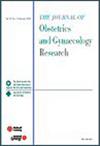High uterosacral ligament suspension with vaginal natural orifice transluminal endoscopic surgery: A better alternative to sacrospinous fixation in postmenopausal women?
Abstract
Objective
Pelvic organ prolapse (POP) significantly impacts women's quality of life, often necessitating surgical intervention. Sacrospinous ligament fixation (SSF) and uterosacral ligament suspension (USLS) are commonly performed, mesh-free procedures for apical prolapse repair. While SSF provides durable support, it may alter vaginal axis alignment and compromise visualization, whereas traditional USLS is associated with ureteral complications. This study compares the perioperative and postoperative outcomes of SSF and Vaginal Natural Orifice Transluminal Endoscopic Surgery (vNOTES) high uterosacral ligament suspension (VN-HUSLS).
Methods
This retrospective case series was conducted at Zeynep Kamil Hospital and included 50 patients with Stage 3 or 4 POP who underwent vaginal hysterectomy followed by SSF (n = 27) or VN-HUSLS (n = 23). Demographic data, operative times, hospitalization duration, POP-Q scores, recurrence rates, and complications were analyzed using SPSS (p < 0.05).
Results
No significant differences were found in age, BMI, or preoperative POP stage (p > 0.05). Prolapse-specific surgical time was significantly shorter in the VN-HUSLS group (p < 0.05). All VN-HUSLS patients underwent bilateral adnexectomy with preoperative indications, compared to five in the SSF group. Postoperative POP-Q scores showed better anatomical correction in the VN-HUSLS group, with sustained improvements at 6- and 12-month follow-ups. In the SSF group, two patients experienced recurrence, one at 6 months (Ba point +2) and the other at 12 months (Ba point +3). In the VN-HUSLS group, one patient was found to have Ba point at +1 at the 12-month follow-up, but this did not result in any additional symptoms for the patient.
Conclusion
VN-HUSLS is a promising alternative to SSF, improving surgical outcomes while reducing recurrence and postoperative morbidity. Further studies are needed to evaluate long-term outcomes and postoperative sexual function.




 求助内容:
求助内容: 应助结果提醒方式:
应助结果提醒方式:


